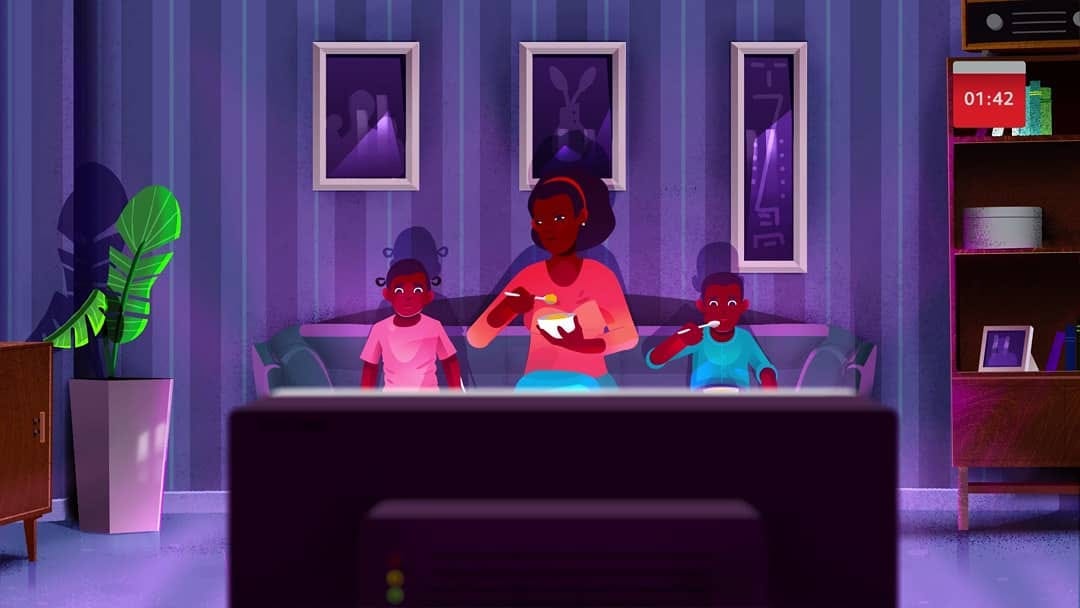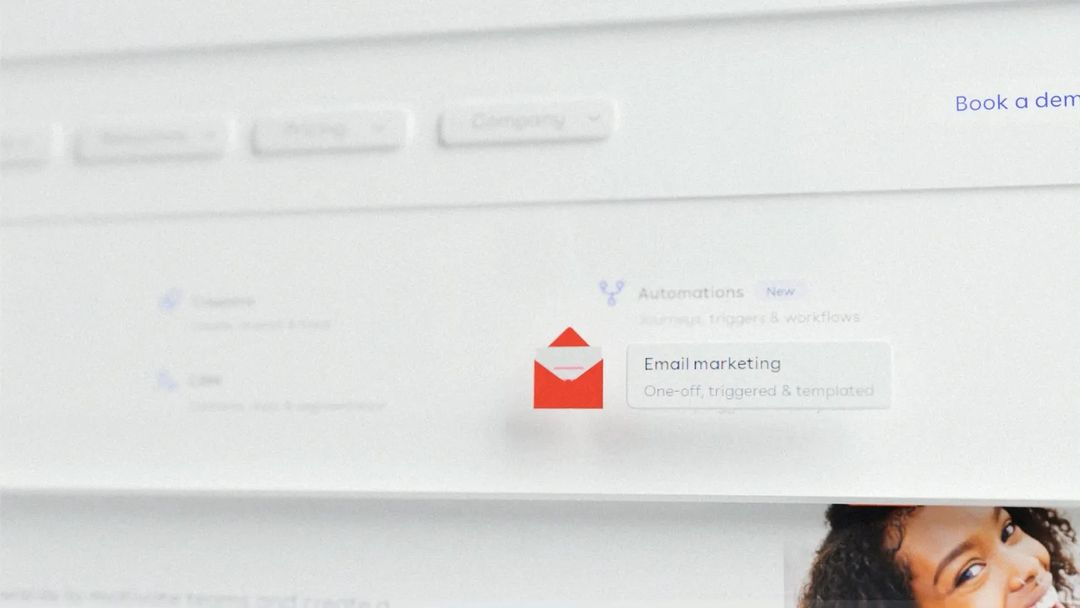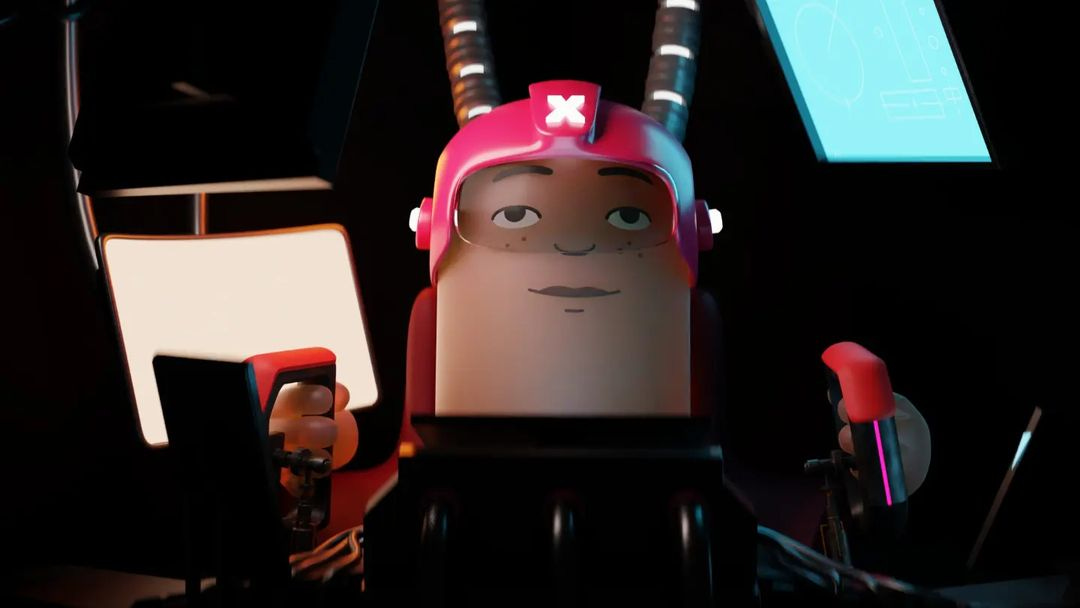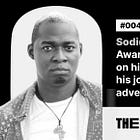Kanso Ogbolu: On his decision to get a Master's degree in Animation after a decade of working in advertising and running his own studio — #014
I have a background in architecture... I applied to a school in the Netherlands, got in to study for a Masters in Animation, and graduated with Honours.
Hi, thank you for joining us for another edition of our interview with African Creatives. In this edition, I spoke with Kanso Ogbolu also known as thesmilinghat, a motion designer and the founder of OBK Studios; a private practice that focuses on motion design, animation, Illustration, VFX, and film. Kanso is the creator of Freakthefxxkout, a collection of creepy short stories.
After a decade of working in the advertising industry and running his own studio, he decided to get a Master’s degree in Animation. If you are interested to know what led him to this decision, how he even got started with motion design, what drives the work he does, the challenges he faces as a creative and how he navigates them, his favourite projects, the people that inspire him, and the people and brands he would love to work with, you should continue reading. You will definitely love and enjoy reading this!
Tell us about yourself
My name is Kanso Ogbolu. I am a motion designer. I currently work at Piggy, a loyalty and engagement software company.
How did you get started with motion design? What led you to motion design?
I have a background in architecture. I finished my bachelor’s degree in 2008 and after practicing for about 2 years, I decided that architecture wasn’t for me. Then I found myself in advertising where I worked for about 5 years as an animator and a digital executive. After about 5 years, I decided it was time to start my company and I started OBK Studios. I ran OBK Studios for 4 years before getting bored and then decided to get a Master’s degree in Animation because everything I knew until that point was self-taught. I applied to a school in the Netherlands, got in to study for a Masters in Animation, and graduated with Honours.
How did you transition from architecture to advertising in the first place?
I learnt on YouTube. I was already practising animation with 3D Studio Max and Daz 3D. By the time I was going to make the transition and start applying to Ad agencies, I had the fundamental skills. I basically taught myself the things I knew up until that point.
What has the journey been like? How would you describe your experience and journey so far?
I left architecture because I felt like it wasn’t for me anymore and got into advertising. I would say my Mom probably influenced my decision to get into advertising because she worked in advertising while I was growing up so it sort of made it easier for me to transition. After working in a number of places, I decided to go on my own and founded my studio. After I got tired of doing that, I decided to use the opportunity to get a Master’s degree and leave the country; killing two birds with one stone. The journey has been an interesting one and has been filled with self-learning.
How would you describe what you do to a 5-year-old?
I create things from scratch and make them move to tell stories.
What is your day-to-day routine? What does a typical day look like for you?
I commute to work by hopping on a bus to get to the train station and then hop on a train to the office. I have breakfast and coffee before I start work. After breakfast, I get to work. My work usually involves making animation and motion design. Because I am the only animator on the team, I get to work with the UX/UI, product, marketing, and communication teams. I swing into action and work on the tasks I have. Once I am done, I send it to the team for feedback. After approval, we push it out. At the end of the day, I go home and chill. I try to have some personal time before going to bed.
What do you enjoy most about what you do? What is the most satisfying thing about your job?
I enjoy bringing things to life. I love the ability to be able to create something. It feels like playing god. It is so fulfilling.
I also love seeing my work in public and seeing people’s reactions to it.
Related interview
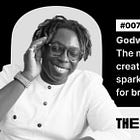
Godwin Olatunde: The motion design lead creating magic and sparking joy in people for brands — #007
What is the best career investment you have made as a creative?
I would say getting my Master’s degree. To be honest, I was doing okay before then. Everything was good and there was really no reason for me to do it but when I did, I knew the impact it had. This is not to say everyone should get a master’s degree but personally, the decision is one I am super grateful for.
What are some of the challenges you face as a creative?
One is getting your ideas approved when you share them with people who don’t really understand them. You are going to have a very difficult time if you have to work with people like this. So, trying to sell my idea is one of my biggest challenges because I can have a very good idea that a fellow creative would easily understand and appreciate but the client won’t.
Another one is having too many ideas I want to implement at the same time. It is a good thing that I have ideas but it can be overwhelming. I want to do everything immediately and can’t stop my brain from ideating. It is kind of a blessing and a curse at the same time.
How do you navigate these challenges?
I have learnt over the years that you need to be able to sell, pitch, and share your ideas in ways they can relate to and understand. You don’t need to use big grammar. You can use pictures, proof of concept, animatics, and storyboards to pass your ideas across if possible. Doing this gives you a better chance of selling your ideas.
As for having multiple ideas, it is what it is. I have learnt to not do more than two at the same time. I try to note down other ideas I may have and work on them later.
Take us through your process and workflow. How do you go from the brief to the final output?
After getting a brief, I speak with the client in order to understand the brief properly. I then come up with a script for the brief. I either do this myself or outsource it and share it with the client.
After approval, I proceed to the storyboard. This is very important as it helps the client visualise the script and the whole idea. Once this is approved, I start to model the characters based on the storyboard and script. I pick out colours and go on to design the environment and assets. This is followed by an animation of the characters according to the script and then sharing it with them.
This first version of the animation is usually not well-detailed and doesn’t have all the flair and paparazzi. After this is approved, I add the finishing touch, do the sound design, share it with the client for feedback, and then share the final result with them.
Check out: 10 African digital products and platforms you should know and use as a creative/creator
What are the essential gadgets, tools, and software you use for work daily?
For my laptop, I prefer using Microsoft Windows OS.
The major software I use is Blender for 3D, Adobe Illustrator, and After Effects for 2D. I also use Photoshop for texturing and Premier Pro for video editing.
How did the Covid-19 pandemic and lockdown impact you and your work?
The pandemic stopped a lot of companies from producing live-action ads so they had to turn to animators and this meant more work for me. I worked on different projects throughout the lockdown in 2020 and my studio did well financially.
Another thing the pandemic did was force everyone to adopt technologies like video conferencing. It also pushed companies to adopt remote working. While we would have gotten there eventually, the pandemic accelerated the adoption of remote work and these technologies.
How do you handle creative blocks and client pushbacks as a creative?
Most times, the creative block I have has to do with how to execute an idea and not about the lack of ideas because I am always bombarded with ideas. A lot of the time, I just wait and while doing something random and entirely different, I figure it out and get the solution.
For pushbacks, you really won’t get used to it because you have poured your heart and soul into an idea but sometimes, it means that idea is not meant for that brief and you have to learn to live with it even though it is hard.
What is the task you don't enjoy doing but you have to do?
I don’t enjoy storyboarding and scriptwriting but sometimes I have to do them. Sometimes, I don’t enjoy illustrating too.
What are the favourite projects you have worked on?
The first one is Ex, Why?, my Master’s degree project. I have had the story in my head for about 16 years but didn’t have the technical ability to bring it to life until that point when I got the skills to do that.
Another one is the project I did for Prudential Zenith Insurance because I tried a new method and style of animating and the client liked it.
I also love the latest ad I worked on for my current company because I also tried something new for it.
What keeps you motivated to keep creating? How do you stay creative?
I am always on YouTube and when I see something or get ideas I try to find how to do it and execute it. So I am always on YouTube.
Instagram is another platform I get inspiration from. I also get inspired when I take walks.
How do you relax and have fun?
I play a lot of video games when I can. I also watch a lot of movies. I like to go out and hang out with friends too. I just do things to get my mind relaxed.
Who are the creatives that inspire you?
Wanoco4D, Ian Hubert, and Deekay.
Who are the people you would love to work with or collaborate with?
Creativesav, Schucks Media, Uzoma Dunkwu, and Ifesinachi Adrian.
Check out: How To Build Meaningful Relationships As A Creative
What brand(s) would you love to work with?
Buck Design and Netflix. I have a story idea I want to pitch to Netflix.
What would you be doing if you were not a designer?
Filmmaking.
What advice do you have for someone who is just starting out or is at the early stage of their creative journey?
Always create! Don’t wait for someone to give you work or hire you until you create because no one would hire you if they don’t see what you have created before.
Think of an idea and find a way to execute it. Make YouTube your best friend. You can find videos that can help you execute and implement your ideas on YouTube. Just find a way to execute your ideas and share them. The more you do this, the more you figure out better ways and processes to execute your ideas, and the better you get.
You should also understand and be fine with the fact that not everyone will like your idea. This also helps you when you get to work on real projects.
You won’t get better if you wait for someone to come and teach and mentor you. You need to figure out how to stand on your own.
Read also
What would you consider success and fulfilment in your career when you look back in the next 20 years?
Having worked on a couple of shows/movies and getting to win multiple awards (the Big Boys awards) for my movies. Also getting to the point where my movies can continually pay me royalties.
Whose story would you love to read about?
Jude Oc, Creativesav, Schucks Media, Uzoma Dunkwu, and Ifesinachi Adrian.
Do you have anything you would like to plug in or promote?
Follow Obk Studios for info about my upcoming game and to stay up to date with my work.
Thank you for sharing with us!!!
Connect with Kanso on Twitter, Instagram, and LinkedIn.
Thank you for reading and don’t forget to like and share the interview.
I know you enjoyed this, you should consider subscribing.
See you next time!!!
Follow us on Twitter, Instagram, and LinkedIn to stay up to date.






